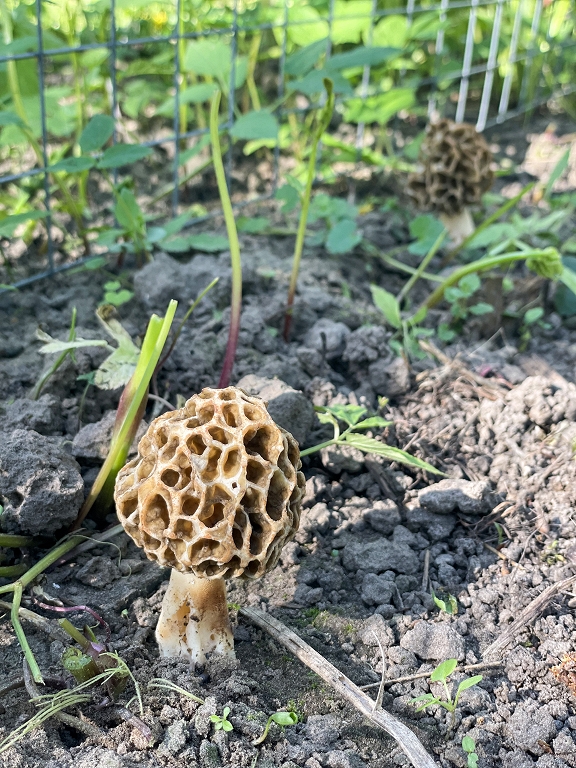Spring mushroom time / day

Have you ever seen Lacpurn in nature? Lāčpurni (Morchella Esculenta) are real spring messengers. They grow short -time – in late April and May – mainly in wet, humus -rich areas, near rivers and ravines, more often in deciduous forests, and even in the backyard garden. This is exactly what happened to me, and for the first time and in several places in almost ten years! It may not have been noticed in the past, because we cut the grass in a timely manner and we could not see the mushroom harvest.
In appearance, Lacpurni is not very attractive – with their netting, the brains -like hat, they are more like a forest creature from childhood fantasies than edible benefits. However, those who once tasted a thoroughly heat -treated bear sauce or fried mushrooms in butter know that this fungus is very enjoyable in taste. I have eaten Lacpurnes only in a restaurant – sometimes they are also available in the seasonal menus of Latvian chefs, though they are usually purchased from farms abroad. Children’s own garden findings were categorically prevented from carrying the kitchen, despite all the information on the Lacpurns on the web, which I presented to them.
In many parts of the world, such as in France, Lacpurni is considered a delicacies – their market price can reach tens of euros per kilogram, while in nature they are looking for diligence as truffles and tends to grow special. Also in Latvia, albeit rarely, Lāčpurni is appreciated, and more and more nature lovers are going to the woods not only to listen to the voices of the birds, but also in the hope of eating a edible spring fungus.
Spring mushrooms are commonly called murks, throwing all the edible bears in one « basket » and poisonous bisins (Latin Gyromitra) whose name in German is Lorchelbut for bears Morkel. The misunderstanding is most likely due to incorrect Latvianization. This is explained by the Latvian National Museum of Natural History Inita Daniele.
It is important to remind you: when collecting Lacpurnes, they should never be consumed fresh – careful heat treatment is required. And, as always mushrooms, be sure of the species accuracy!
Lāčpurna hats are characterized by a symmetrical, cell -like fold, and their base tightly clinged into the mushroom stalk. The color of the bear hats varies from beige to brown. The size of the smallest bears can be up to 10 centimeters, but most occasionally reaches up to 20 centimeters.
Therefore, if you haven’t walked the forest this spring and look carefully under the trees, maybe it’s the right time.








